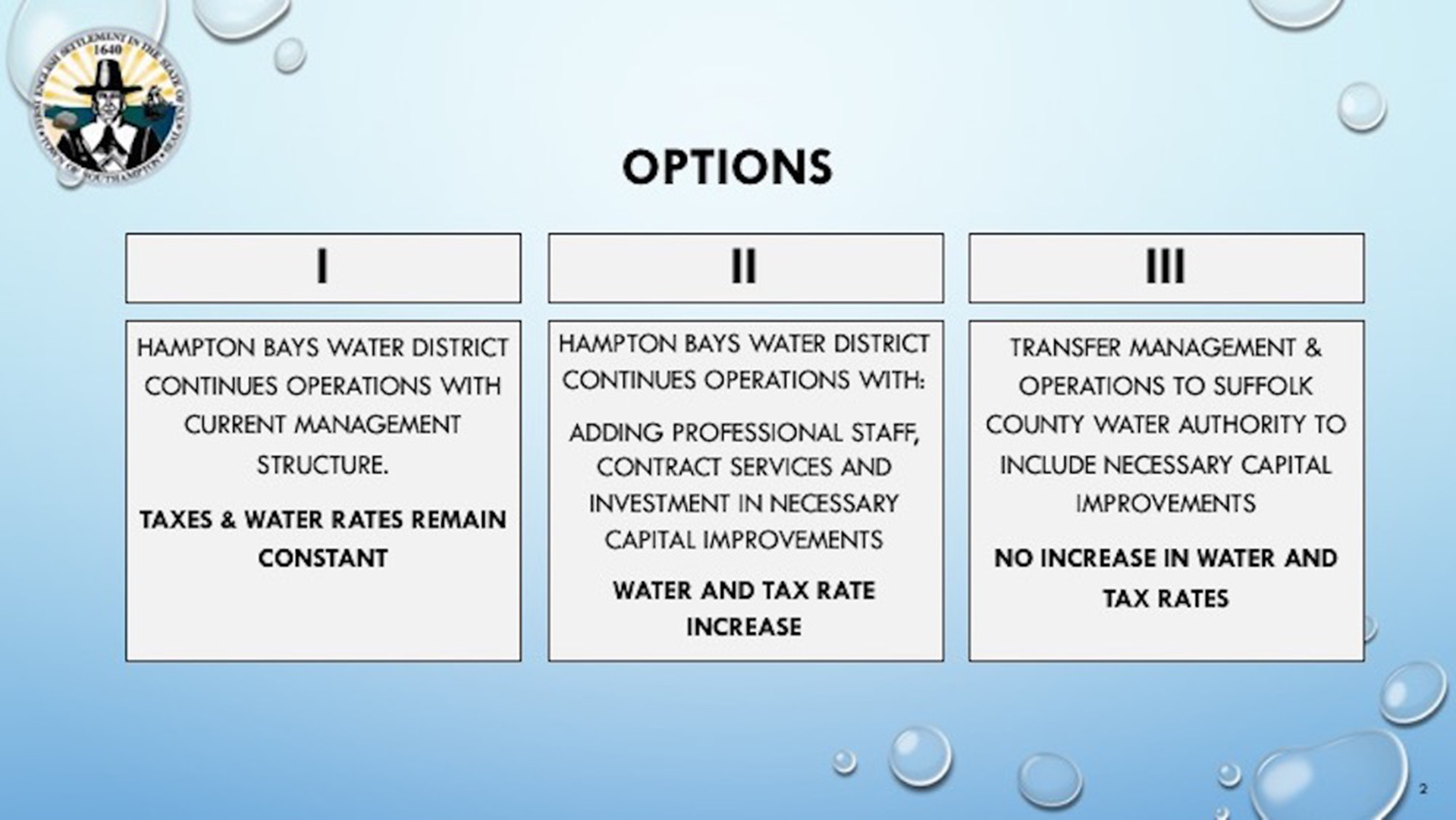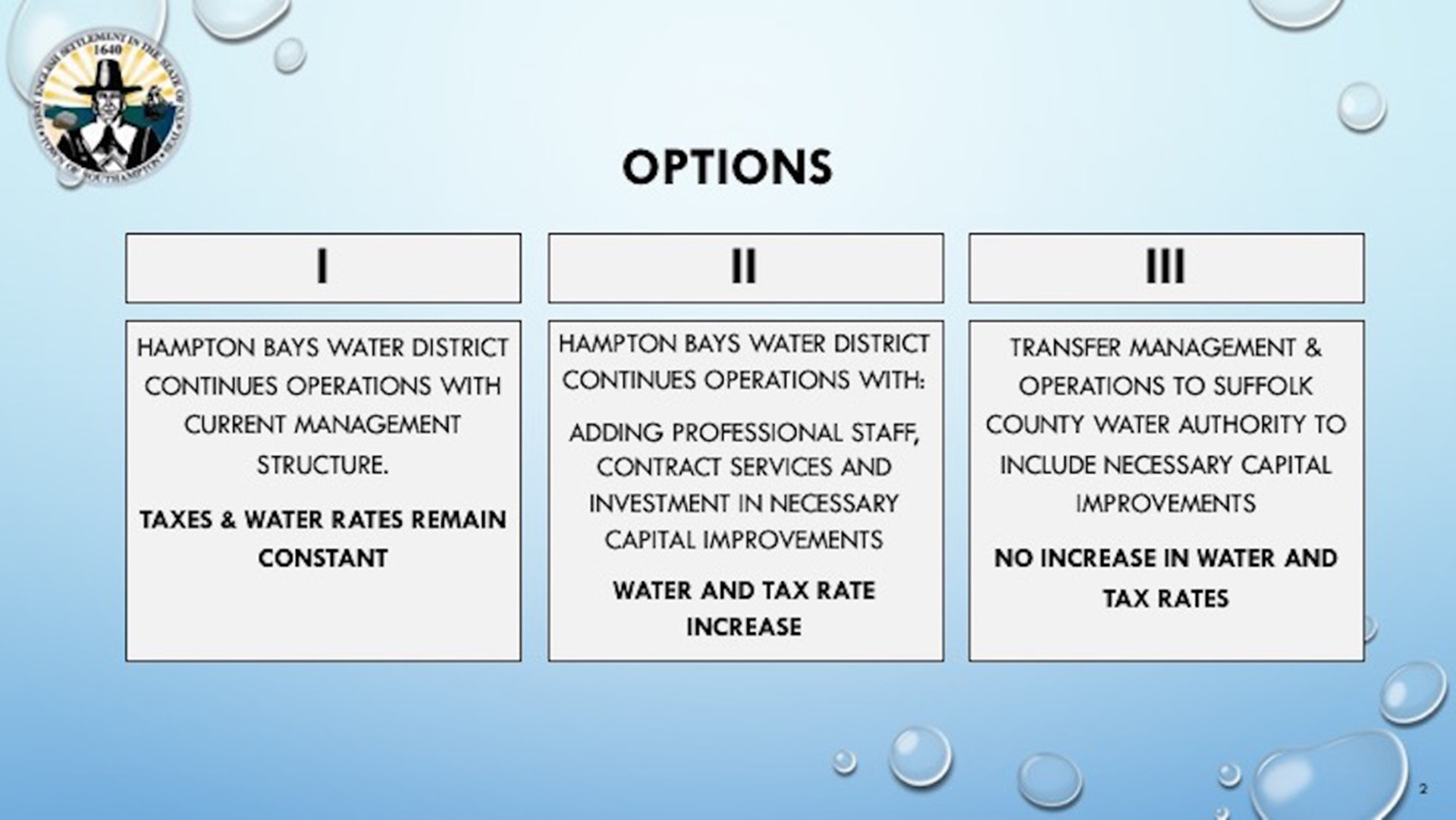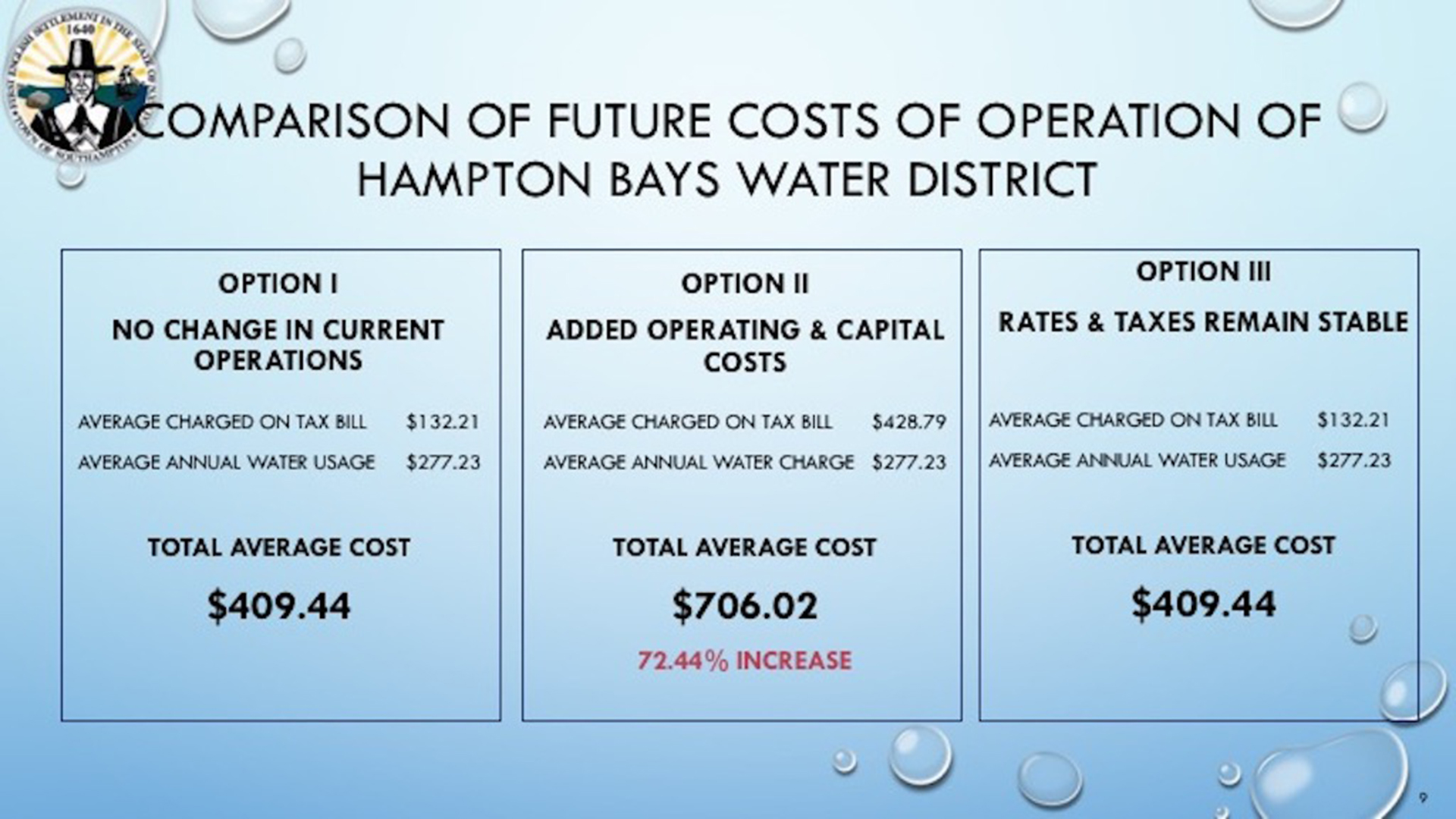Weighing The Water Options



“Don’t give residents false hope.” That’s what Southampton Town Supervisor Jay Schneiderman told Councilwoman Christine Preston Scalera when she suggested exploring whether or not Community Preservation Fund money could pay for work to upgrade the Hampton Bays Water District’s infrastructure.
“There may be a way to bring costs down based on what CPF money covers and contract costs being cheaper,” Preston Scalera said. “I just want to make sure I do my due diligence so residents can make the best decision possible. There might be a threshold they’re willing to pay. I know this means a lot to the people in this area.”
But Schneiderman, speaking at a January 31 meeting, said that CPF money could not be used, under the restrictions of current law.
Comptroller Len Marchese presented three options to tackle the water woes in Hampton Bays. One option, which the board immediately nixed, was to keep things as they are.
“We know we need to up our game,” Marchese said. “This year, we experienced a lot of problems with the ‘status quo.’”
Another possibility is that Hampton Bays residents maintain management of the water district. With this second option would come an investment in infrastructure and expansion of operations. This includes the hiring of additional staff, contract services, and investment in necessary capital improvements. The water and tax rate would both increase, but it was unclear by how much.
According to Marchese, if the water district were to make the same $14.6 million investment Suffolk County Water Authority has proposed to make over the next three years, it would cost district residents an estimated $19.7 million, once interest was factored in. This would equate to a 72.44 percent increase in the yearly tax and water bills combined, or $428.79 a year charge on the tax bill and $277.23 on the water bill, he told the board.
Capital investment would go toward iron and manganese removal systems, recoating tanks, new generators, check valves, SCWA tie-ins for increased pressure, and replacing water meters. Additional operational costs would include water testing; technology costs; contracting engineers, hydrologists, and chemists; and administrative and legal support. While the town would prioritize these needs as necessary, potentially subtracting some of the proposed changes to alter the costs, the estimated costs might end up be higher than projected.
“There’s just a lot of unknowns with a system as old as this,” Councilman John Bouvier said. “There’s a lot of infrastructure put under the ground here through the years and we don’t know the state of it. We need a maintenance schedule, too.”
Councilman Tommy John Schiavoni also addressed the need to fix water mains, and noted that since the numbers were based on SCWA estimates, it could be that the nonprofit might be able to complete the projects at a lower cost than the town would.
The third option Marchese discussed would be to relinquish control to SCWA. Handing over management to SCWA would keep prices the same, because the town would control the rates. Pros to this deal would be in-house professional staffing, technical, and lab services; implementation of recommended infrastructure improvements; an enhanced oversight and maintenance system; costs for all the above being shared equally among SCWA customers; and having an agreement that can be terminated at any time. The cons would be the loss of local control and operational management being contracted to SCWA.
desiree@indyeastend.com



